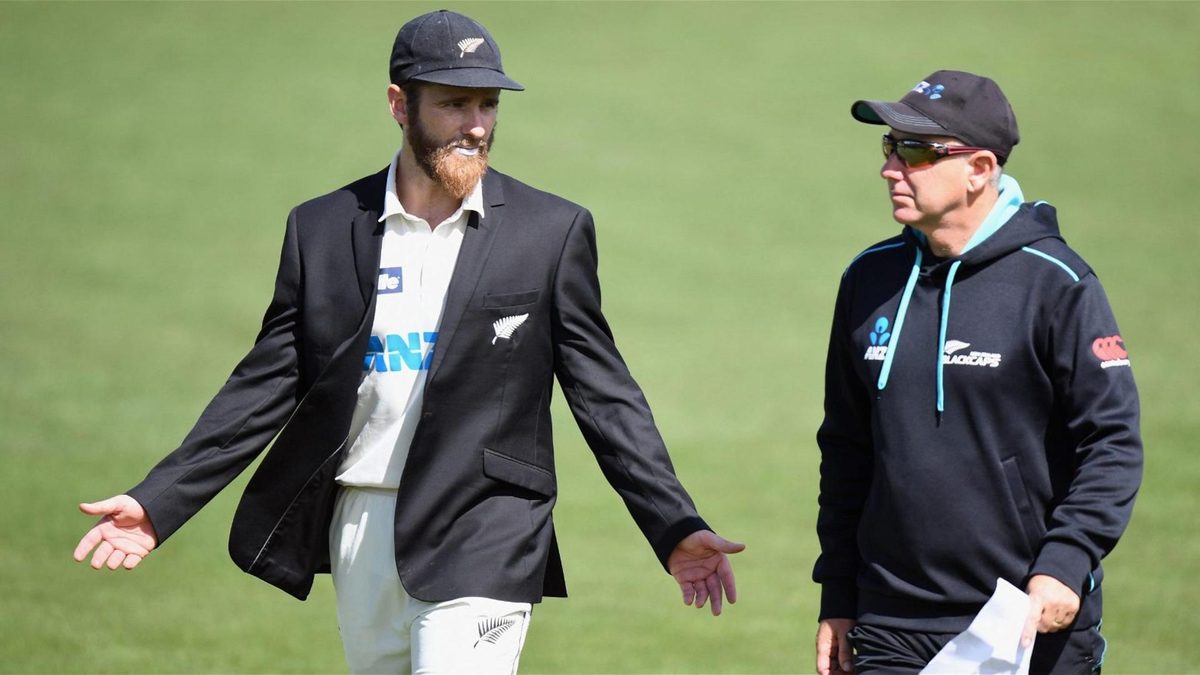
New Zealand have announced a 20-strong squad for their Test tour of England, which includes the World Test Championship final. Here’s a look at the key questions that could inform the make-up of their XI.
Do New Zealand back their gameplan or adapt to conditions?
At home, when everyone is fit, New Zealand have arguably the most settled Test XI in world cricket. Tom Latham, Kane Williamson, Ross Taylor and Henry Nicholls all demand places as batsmen, Tom Blundell is being backed as Latham’s opening partner, and BJ Watling is undoubtedly the first-choice gloveman.
With the Black Caps opting for a five-bowler strategy – and largely a five-seamer strategy – Kyle Jamieson, Neil Wagner, Trent Boult and Tim Southee have all bases covered – with Colin de Grandhomme’s obscene all-round stats – his averages in both disciplines are basically identical to those of Ben Stokes – meaning he takes the all-rounder’s slot.
And it works too. They haven’t lost a Test at home in over four years, let alone a series, with 13 wins and three draws in that time.
Away from home, they have had to adapt. Spinners played key roles in a series win in the UAE and a draw in Sri Lanka, and they even picked two tweakers in the last Test of a 3-0 drubbing in Australia at the SCG. Whether they do the same this time around is a different question. English conditions are generally thought to be similar to those found in New Zealand, though there are some differences, and their recent success has been so stark – especially since the discovery of Jamieson, who has won all six of his Tests so far – that the Black Caps may choose to continue to back their method. Or that famous Kiwi humility could encourage them to make changes.
Do they play a spinner?
More fundamentally, this boils down to two questions. The first is: do New Zealand play a spinner? In the past four years, no country in the world has seen a higher average for spin in Test cricket than New Zealand, with slow bowlers averaging an eye-watering 64.88 in the Land of the Long White Cloud. England is hardly a spinner’s paradise, but the equivalent figure is 34.46. New Zealand have every base covered, with Ajaz Patel the most capable spinner, Mitchell Santner capable of batting at No.7, and the uncapped Rachin Ravindra an outside bet as a top-order bat with some capable slow left-arm in his locker.
Four bowlers or five?
New Zealand isn’t just tougher on spinners, it’s overall an easier place to bat than England is. In that same four year time span, the overall batting average in New Zealand is 33.12, compared to England’s 26.82, the third lowest among countries to host more than one Test. New Zealand’s five-bowler strategy has been enabled in part by having confidence in their batsmen to cash in on friendlier surfaces, while also knowing the extra bowler could be required in the toil to break down a side digging in. In England, the argument could flip. Whether it will, is another question.
Is there room for Devon Conway?
Devon Conway’s international debut came with much hype, with the South Africa-born batsman racking up the runs in domestic cricket while serving out a qualification period. He delivered in some style. His ODI average currently sits at 75 after three games, while in 14 T20Is he has smashed 473 runs at 59.12, with a strike-rate of 151.11. Those numbers might mean little when it comes to Test readiness, but they show the international stage holds little to fear, and a first-class average of 47.21 suggests he can do a job in red-ball cricket too.
There isn’t currently a spot going in New Zealand’s top six, and when there was during the home summer, it was Will Young who filled it, making a high score of 43 in two games played in the absence of Kane Williamson on paternity leave. The question is whether New Zealand look at Conway and think ‘Here is a batsman in his prime and completely ready’, and either take the harsh call to leave out one of their established players, or drop a bowler in order to fit him in.
The Trent Boult and Ross Taylor conundrum
Trent Boult and Ross Taylor, if fit and available, make New Zealand’s first-choice Test XI anywhere, obviously. But Boult is confirmed to miss the first Test against England, having stayed in New Zealand a while longer to spend time with his family, and isn’t yet a sure thing to be available for the second Test. He is unlikely to have much cricket behind him before the WTC final.
Ross Taylor meanwhile is recovering from a calf strain, and made just one half-century in New Zealand’s home summer. While he is expected to be back fit, and therefore, like Boult very likely to feature, New Zealand might have to weigh up gambling on the fitness of a batsman who turned 37 in March.








